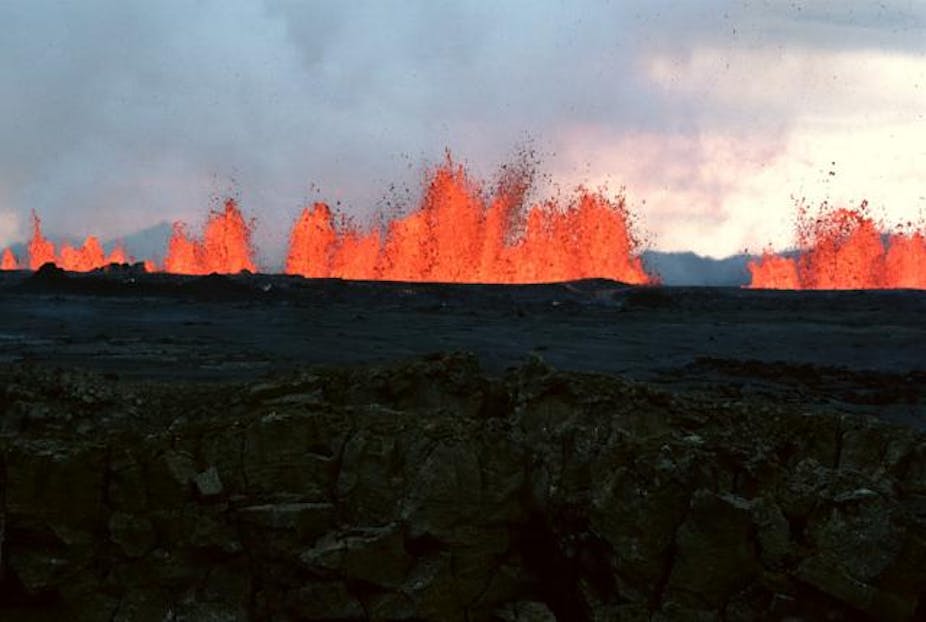The Popocatepetl volcano in Mexico is throwing out plumes of smoke and ash, an eruption that threatens the one million inhabitants of the towns and villages nearby. Mexico City, the world’s third largest city of 21 million people, is only 25 miles away. Earthquakes and ash-falls have occurred regularly since Popocatepetl burst into life again in 1994 after 50 years’ silence, raising the question of how to live alongside these difficult, smouldering neighbours.
Many volcanically active areas are densely populated, with the potential for disaster. When Mount Vesuvius in southern Italy erupted in 79AD, pyroclastic flows of ash and gas and ash-fall devastated the towns of Herculaneum and Pompeii, killing around 16,000 people. Today, Mount Vesuvius is only five miles from Naples, a city of almost four million people. Indonesia is the world’s most volcanically active country, with 76 historically active volcanoes in a country of 238 million people. In October 2010, Merapi volcano on the island of Java erupted, ejecting ash 40,000ft into the atmosphere and killing more than 190 people.
Vulcanologists working at observatories continuously monitor the volcano’s “vital signs” looking for any changes which may pre-empt an eruption. Magma moving through the earth can cause small earthquakes, and the volcano expands in size as it fills with lava. The Merapi eruption could have killed hundreds of thousands of people, but the warning signs were detected and 370,000 people were evacuated.

The field of volcanology is moving away from studying the why and how of volcanoes towards hazard mitigation and risk analysis. Volcanologists cannot prevent or even accurately predict an eruption, but we can provide early warning of an eruption, plot and map areas safe from lava flow, and help develop evacuation plans.
At any one time there are around 30 eruptions going on worldwide. Mount Etna in Italy has erupted 13 times this year, most recently a few weeks ago. The eruption of Cleveland in Alaska put Californian air traffic control on high alert, and five climbers were killed by a sudden eruption of Mayon in the Philippines this week.
Volcano observatories worldwide use the international aviation colour code system (green, yellow, orange, red). There are around 30 eruptions at any time worldwide (red), and up to 100 or more in a state of unrest (yellow). But as only a few episodes of detected unrest lead to an eruption, it’s quite common for a volcano to scale from a quiet, normal state, to active and then back again without eruption.
So trying to make local people believe “their” volcano could harm them can be one of the most difficult tasks facing vulcanologists. For example, when asked about Popocatepetl earlier this week, a nearby resident said the volcano took care of them and sent them water. Others visit the volcano every year to ask for rain for their crops. When last evacuated in May 2012 they had belongings stolen from their homes, and after all this the volcano didn’t erupt anyway. Why should they believe it will this time?

Volcanic eruptions threaten not only the local population but can affect people worldwide. Despite living in a country without volcanoes, residents in the UK felt the effects of the 2010 eruption of Ejyafjallajökull in Iceland, as ash clouds drifted across northern Europe, grounding flights and costing the aviation industry millions of pounds. In 1600, the vast amount of ash thrown into the atmosphere by the eruption of Huaynaputina in Peru caused famines in Northern Europe and Russia that killed millions after crops failed.
On the other hand, Japan, Iceland and New Zealand have harnessed their volcanoes as heat engines providing geothermal energy. Geothermal energy accounts for 66% of Iceland’s energy generation.
Volcanic eruptions are an incredible display of nature’s force. They can be devastating, but they tell much about the planet we live on, and we have even learnt to harness their power. As the human population grows, so does vulcanologists’ responsibility to equip local residents with the knowledge that may save their lives

